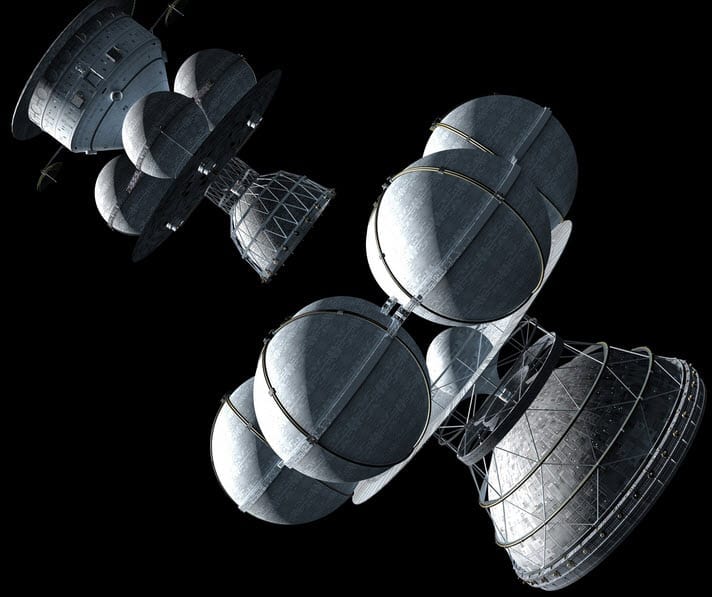
The awesome 100 Year Starship (100YSS) initiative by DARPA and NASA proposes to send people to the stars by the year 2100 — a huge challenge that will require bold, visionary, out-of-the-box thinking.
There are major challenges. “Using current propulsion technology, travel to a nearby star (such as our closest star system, Alpha Centauri, at 4.37 light years from the Sun, which also has a a planet with about the mass of the Earth orbiting it) would take close to 100,000 years,” according to Icarus Interstellar, which has teamed with the Dorothy Jemison Foundation for Excellence and theFoundation for Enterprise Development to manage the project.
“To make the trip on timescales of a human lifetime, the rocket needs to travel much faster than current probes, at least 5% the speed of light. … It’s actually physically impossible to do this using chemical rockets, since you’d need more fuel than exists in the known universe,” Icarus Interstellar points out.
So the Icarus team has chosen a fusion-based propulsion design for Project Icarus, offering a million times more energy compared to chemical reactions. It would be evolved from their Daedalus design.
This propulsion technology is not yet well developed, and there are serious problems, such as the need for heavy neutron shields and risks of interstellar dust impacts, equivalent to small nuclear explosions on the craft’s skin, as the Icarus team states.
Although Einstein’s fundamental speed-of-light limit seems solid, ways to work around it were also proposed by physicists at the recent 100 Year Starship Symposium.
However, as a reality check, I will assume as a worse case that none of these exotic propulsion breakthroughs will be developed in this century.
That leaves us with an unmanned craft, but for that, as Icarus Interstellar points out, “one needs a large amount of system autonomy and redundancy. If the craft travels five light years from Earth, for example, it means that any message informing mission control of some kind of system error would take five years to reach the scientists, and another five years for a solution to be received.
“Ten years is really too long to wait, so the craft needs a highly capable artificial intelligence, so that it can figure out solutions to problems with a high degree of autonomy.”
If a technological Singularity happens, all bets are off. However, again as a worse case, I assume here that a Singularity does not happen, or fully simulating an astronaut does not happen. So human monitoring and control will still be needed.
The mind-uploading solution
The very high cost of a crewed space mission comes from the need to ensure the survival and safety of the humans on-board and the need to travel at extremely high speeds to ensure it’s done within a human lifetime.
One way to overcome that is to do without the wetware bodies of the crew, and send only their minds to the stars — their “software” — uploaded to advanced circuitry, augmented by AI subsystems in the starship’s processing system.
The basic idea of uploading is to “take a particular brain [of an astronaut, in this case], scan its structure in detail, and construct a software model of it that is so faithful to the original that, when run on appropriate hardware, it will behave in essentially the same way as the original brain,” as Oxford University’s Whole Brain Emulation Roadmap explains.
It’s also known as “whole brain emulation” and “substrate-independent minds” — the astronaut’s memories, thoughts, feelings, personality, and “self” would be copied to an alternative processing substrate — such as a digital, analog, or quantum computer.
An e-crew — a crew of human uploads implemented in solid-state electronic circuitry — will not require air, water, food, medical care, or radiation shielding, and may be able to withstand extreme acceleration. So the size and weight of the starship will be dramatically reduced.
Combined advances in neuroscience and computer science suggest that mind uploading technology could be developed in this century, as noted in a recent Special Issue on Mind Uploading of the International Journal of Machine Consciousness).
Read more . . .
via Kurzweill Accelerating Intelligence – Giulio Prisco
The Latest Streaming News: Interstellar missions updated minute-by-minute
Bookmark this page and come back often
Latest NEWS
Latest VIDEO







